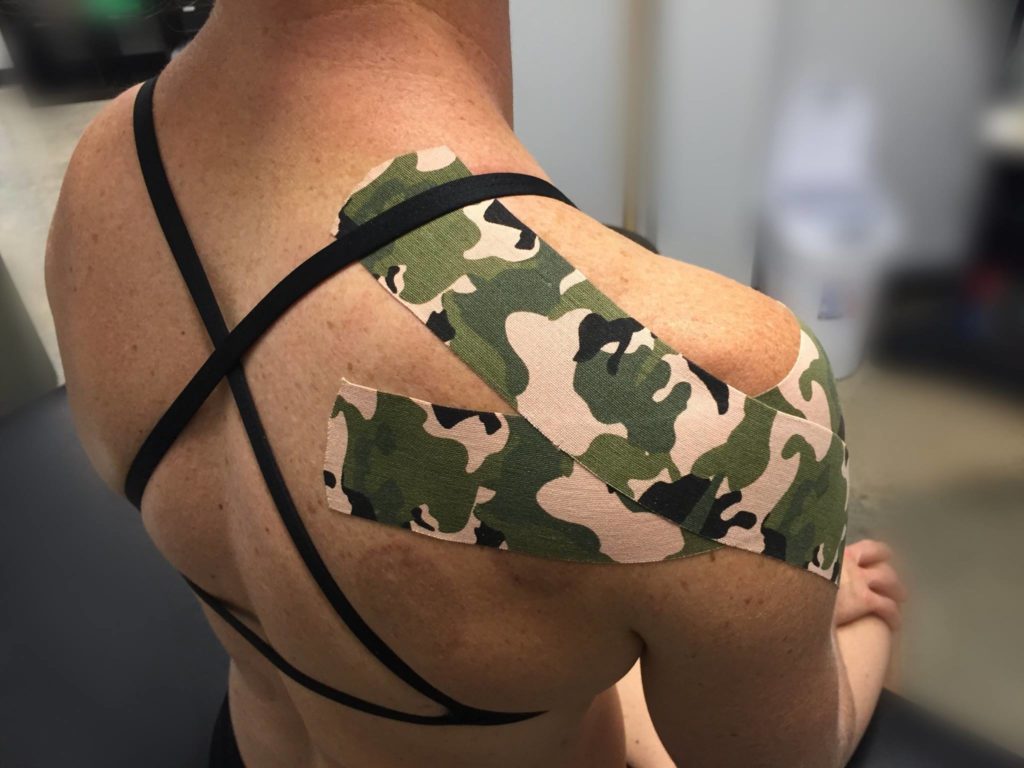
No Pain No Gain: Injury vs Gains
Written by Invictus Athlete Josh Littauer
If you have been in CrossFit for any length of time you have probably finished a workout, looked at the person lying on the floor next to you, and said “man that really hurt!” It is not uncommon to look across the gym at the conclusion of a tough workout see the carnage of bodies lying all over the floor writhing in pain and agony. To an outsider, this would appear to be a real issue and possibly cause for calling 911 as there are now a handful of injured athletes rolling around like they’ve been shot. However, it seems fairly commonplace in a CrossFit gym. It is also commonplace that there is little differentiation between beneficial pain and the onset of an injury.
The CrossFit community at large is not too concerned with long term health but is seemingly more concerned with putting up a new personal best or simply beating everyone else in the gym. Now don’t get me wrong, I am all for pushing the limits of your physical capabilities and for being competitive within your community, but these things should not come before your long-term physical health. Being sore is great, in fact soreness is often a necessary part of getting stronger and building muscle; being in pain is not good and can be forewarning of injury. Here are a few differences between muscle soreness and pain that leads to injury.
Soreness:
-Cannot be pinpointed to one location. Generally broad area of muscle such as quads, hamstrings, or glutes.
-Usually noticed when moving about or exercising.
-Soreness is typically symmetrical, i.e. both legs are sore.
-There is delayed onset, typically between 24-48 hours.
Injury:
-Can be targeted to a specific place in your joint or muscle.
-Lasts longer than 1-3 days.
-Noticeable pain when sedentary.
-Decreased range of motion with pain in associated joint.
Knowing the difference between muscle soreness or pain leading to an injury is key to having longevity in the sport of CrossFit. Too often you see athletes who are having pain in a joint and yet they continue to do things that bother that joint or force them to compensate to get away from the pain. If you can pinpoint a place of pain and the movements that make that pain worse, that’s a great sign to ease off of that joint to let it heal. It is not a sign of weakness to admit you have something bothering you, it’s being smart and considering your long-term health.
For some of us we discovered CrossFit and fell in love with it and haven’t taken so much as two or three days off in months. While a love for CrossFit is good, your typical metcon can beat your body up quite a bit and five or six days a week can be too much.
I will use myself as an example. I have been a competitive CrossFitter for a few years now, much of that time has been spent training twice a day five days a week. I always try to give my best in training and to push each workout as hard as I can. Having done this for a few years I have accumulated a small amount of tweaks and minor injuries that were quickly resolved in a few days.
My most recent tweak was in my left shoulder and was a little more severe than previous tweaks. In my competitive nature and desire to not lose any training time I decided to push through the pain and keep training. I did this for a few days, while I tried to mobilize my shoulder in hopes the pain would go away. In one of my afternoon training sessions I was doing some Olympic lifting, snatching to be exact, and I felt a sharp pain in my shoulder and I immediately dropped the bar. I went to the doctor later that afternoon and turns out I had torn the long head of my bicep. Now instead of a few days away from training I was looking at 6-8 weeks. Had I taken the necessary time off and given the initial pain the time it needed to heal, I would not have worsened the injury and been forced to take more time off.
What to do if you’re injured?
If you have determined that pain you are experiencing is in fact the beginning of an injury, you have several options. The first being taking some time to rest that area. This doesn’t mean you have to take time completely off of training, it may just mean substituting movements that would further the injury. Specific mobility is a big thing that can help remedy pain in a short amount of time; if you’re unsure what to do than ask one of your coaches. There are several other health care providers such as Airrosti and chiropractors that can also be very helpful in getting you back to normal training.
There are going to be little tweaks that pop up when doing CrossFit. It is very important to know the difference between muscle soreness and injury pain. Checking your ego at the door and being humble enough to recognize an arising issue will save you a lot of trouble in the long run, and will help you stay in CrossFit longer. The journey should be fun and enjoyable, not something you walk into dreading because your body already hurts. Enjoy the process, listen to your body, and enjoy CrossFit for years.
Resources:
http://www.moveforwardpt.com/resources/detail.aspx?cid=1d04bab9-44f2-44d7-b510-7337125c88e9#.Vi6XoqUo7MI
http://www.philly.com/philly/blogs/sportsdoc/Soreness-vs–Injury-Whats-the-difference.html
Also Check Out…
The Math Equation That Can Help Us Prevent Injuries